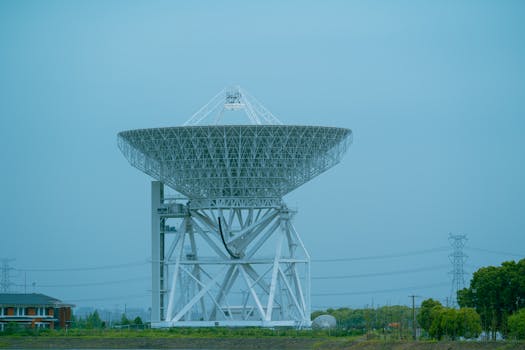
Navigating the Skies: Insights into Recent Satellite Telecommunications Innovations
Navigating the Skies: Insights into Recent Satellite Telecommunications Innovations. The world of satellite telecommunications has undergone significant transformations in recent years, driven by advancements in technology and the increasing demand for global connectivity. As we continue to rely on satellite communications for various aspects of our lives, it’s essential to explore the latest innovations and their impact on the industry.
Introduction to Satellite Telecommunications
Satellite telecommunications involve the use of satellites orbiting the Earth to transmit and receive data, voice, and video signals. This technology has been around for decades, but recent advancements have made it more efficient, faster, and more reliable. With the help of satellites, we can now communicate with people across the globe, access remote areas, and even provide internet connectivity to underserved communities.
Recent Innovations in Satellite Telecommunications
One of the most significant innovations in satellite telecommunications is the development of high-throughput satellites (HTS). These satellites offer faster data transfer rates, making them ideal for applications such as broadband internet, video streaming, and remote sensing. HTS has enabled the widespread adoption of satellite-based services, including satellite broadband, which provides internet connectivity to remote and underserved areas.
Another innovation is the use of low-Earth orbit (LEO) satellites. LEO satellites orbit the Earth at an altitude of around 500-2000 kilometers, which is much lower than traditional geostationary satellites. This lower altitude enables faster data transfer rates, lower latency, and improved connectivity. Companies such as SpaceX and OneWeb are launching constellations of LEO satellites to provide global internet coverage and other satellite-based services.
Impact of Satellite Telecommunications Innovations
The recent innovations in satellite telecommunications have had a significant impact on various industries, including telecommunications, aviation, maritime, and emergency response. Satellite-based services have enabled the provision of critical communications infrastructure, such as backup networks for emergency response and disaster recovery. Additionally, satellite telecommunications have enabled the development of new applications, such as satellite-based IoT, which is used in industries such as agriculture, logistics, and environmental monitoring.
Conclusion
In conclusion, recent satellite telecommunications innovations have transformed the way we communicate, providing faster and more reliable connections worldwide. As the demand for global connectivity continues to grow, it’s essential to invest in the development of new satellite technologies and infrastructure. With the help of satellite telecommunications, we can bridge the digital divide, provide critical communications infrastructure, and enable the development of new applications and services.

